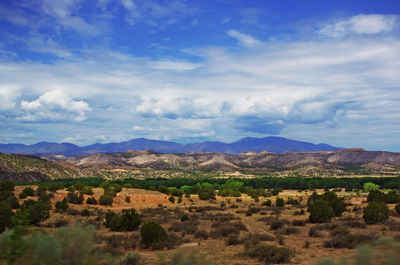New Mexico State Symbols
New Mexico State Symbols, Emblems, and Mascots

Students in New Mexico can experience a unique US culture with strong Hispanic and Native American influences. New Mexico also has a large number of national parks and many picturesque national monuments for students to explore, as well as beautiful scenic deserts, forested mountain wildernesses, vast mesas, and snow-capped mountains.
In 1540, the Spanish conquistador Coronado traveled through the area known today as New Mexico in search of the fabled seven cities of gold. New Mexico, called the "Land of Enchantment," was the 47th state, entering the Union in 1912. Part of the "Old West," New Mexico was a place known for cowboys and cattle drives. The influence of the Apache Indians who live there is evident in the artwork and culture. The Pueblo Indian presence is also very apparent, most visibly in the tribe's buildings. New Mexico also has a large Hispanic population, as New Mexico was under Spanish control from the 16th century until about 1846. The capital city of Santa Fe, founded in 1610, has the oldest continually used seat of government in North America. The state butterfly is the Sandia Hairstreak.
New Mexico State Symbols contains descriptions and pictures of the state symbols, emblems, and mascots of the state, which can be quickly accessed. This resource guide represents many of New Mexico state facts such as New Mexico state symbols, the state flower, the state gemstone, the state insect, the state tree, the state bird, the state animal, the state flag that flies over New Mexico, and the capital, as well as many more symbols, emblems, and mascots.







